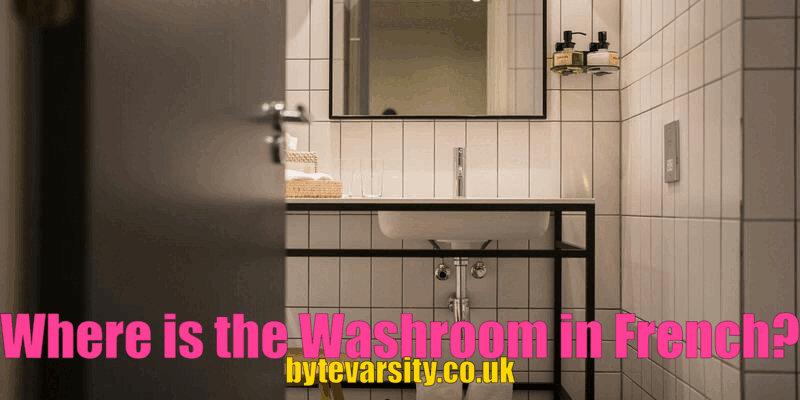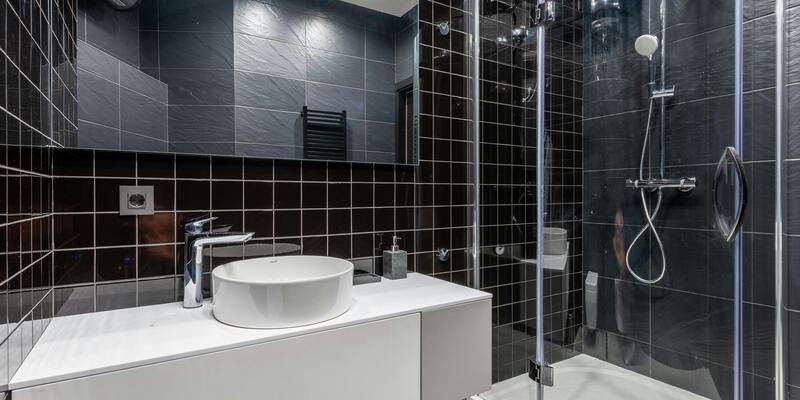Introduction
Knowing how to ask where the washroom is in French can make your travels or interactions in French-speaking regions much smoother. Whether you’re in France, Quebec, or any other French-speaking country, these basic phrases will help you communicate with ease. This guide will walk you through the most common expressions, essential bathroom-related vocabulary, and cultural tips for navigating washroom inquiries.
Related: Washroom Vanity Light
The French Word for Washroom
In French, the term commonly used for the washroom is “les toilettes” (pronounced lay twah-let), which refers specifically to the toilet but is often used to describe the whole bathroom or restroom. This term is widely used in various French-speaking regions, including France, Canada, and Belgium.
Another term you might hear is “les WC” (pronounced lay vay-say), which stands for “water closet” and is used interchangeably with “toilettes.” This term is especially common in European French. If you’re looking for a more general term for the bathroom, you could also say “la salle de bain” (pronounced lah sal duh ban), which translates to “the bathroom” and typically refers to a private bathroom with a shower or bathtub, rather than just the toilet.
Common Phrases to Ask for the Washroom
When you need to ask for the washroom, there are several polite and straightforward ways to phrase your question. Here are the most commonly used expressions:
- “Où sont les toilettes?”
(Pronounced: oo son lay twah-let?)
Translation: “Where are the toilets?”
This is the most basic and commonly used question in French. It’s suitable for almost any situation. - “Excusez-moi, où sont les WC?”
(Pronounced: ex-kew-zay mwah, oo son lay vay-say?)
Translation: “Excuse me, where are the toilets?”
This version is slightly more formal and polite, perfect for use in restaurants or hotels. - “Où est la salle de bain?”
(Pronounced: oo eh lah sal duh ban?)
Translation: “Where is the bathroom?”
This phrase is ideal when you’re referring to a bathroom with a shower or bathtub, such as in a home or hotel room. - “Puis-je utiliser les toilettes?”
(Pronounced: pewee-zh oo-tee-lee-zay lay twah-let?)
Translation: “May I use the washroom?”
This formal expression is useful if you want to ask for permission to use the restroom, especially in professional or polite settings.
Etiquette When Asking for the Washroom in French-Speaking Cultures
Cultural etiquette plays an important role in how you ask for the washroom in French-speaking regions. In more formal settings, such as fine dining restaurants or business meetings, it’s crucial to be polite when requesting. Using the phrase “Excusez-moi” (excuse me) or “Puis-je” (may I) is a sign of respect.
In casual settings like cafés or smaller stores, it’s acceptable to use the simpler “Où sont les toilettes?” without being overly formal. However, always be aware of your tone and the context—being polite is valued in all situations.
In some regions, especially in more relaxed environments like Quebec, you might hear people use slightly different phrasing or terms. For example, you might hear, “Les toilettes sont où?” (Where are the toilets?) in a more informal tone.
Additionally, many places in French-speaking countries have clear signage to guide you to the restroom. Look for signs that say “toilettes” or “WC” to find the washroom.
Other Useful Vocabulary for Bathrooms in French
Knowing a few additional terms related to the bathroom can enhance your ability to navigate French-speaking environments. Here are some helpful words:
- Le lavabo (pronounced luh lah-vah-boh): This means “sink” or “washbasin.” It’s useful when you need to refer to a place to wash your hands or face.
- La douche (pronounced: lah doosh): This is the word for “shower.” It can help you identify a restroom with shower facilities.
- Le papier toilette (pronounced luh pah-pee-ay twah-let): This refers to “toilet paper.” It’s essential to know this term, especially in a pinch.
- Les serviettes (pronounced: lay ser-vee-et): This means “towels.” Knowing this word can be useful when looking for towels in a bathroom.
- L’évier (pronounced: lay-vee-ay): Although this means “kitchen sink,” it’s useful to know in case you encounter it while navigating different areas.
If you’re ever in a public space like a shopping center or a restaurant, bathroom signs are typically straightforward. Look for the word “toilettes” or “WC,” followed by a directional arrow or icon of a figure.

Conclusion
Mastering the essential phrases for asking where the washroom is in French can significantly improve your experience when traveling in French-speaking regions. Understanding terms like “Où sont les toilettes?” and “Excusez-moi, où sont les WC?” will help you communicate effectively in most situations, whether you’re in a casual café or a formal business meeting.
Remember to also familiarize yourself with other bathroom-related vocabulary, such as “le lavabo” for the sink or “la douche” for the shower, to navigate restroom facilities better. And don’t forget to observe cultural etiquette, such as being polite when asking for the bathroom.
For more tips on keeping your washroom space clean and pleasant, visit Pure Auto Home’s washroom plants guide. This resource will help you maintain a fresh and healthy bathroom environment, ensuring your experience is as comfortable as possible.
Armed with these useful phrases and cultural insights, you’ll feel confident and well-prepared when you need to ask for the washroom during your travels or daily interactions in French-speaking regions.
